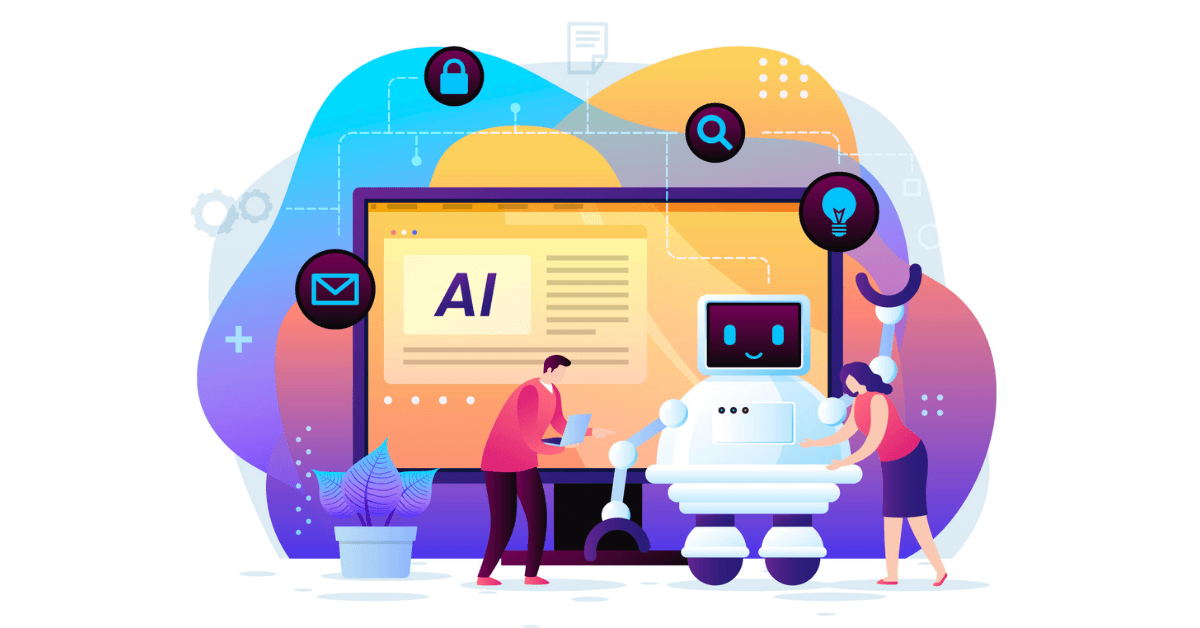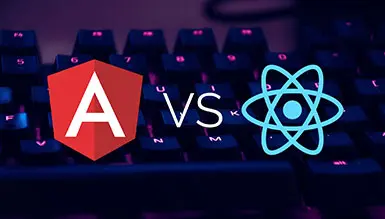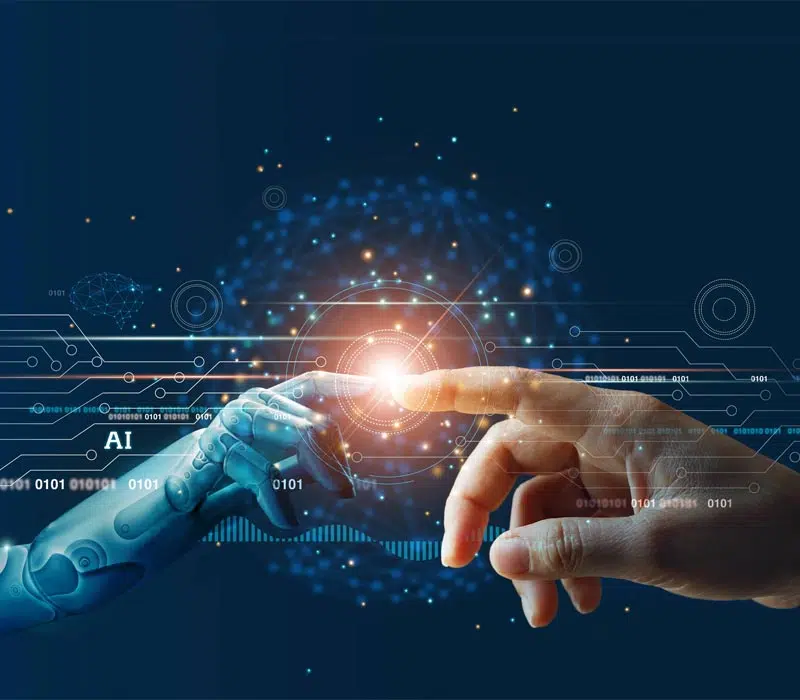The power of artificial intelligence (AI) lies in its ability to model and simulate human intelligence, enabling machines to think, learn, and make decisions. To truly unlock its potential, it is crucial to delve into the AI modeling process. This process entails gathering and cleaning data, selecting an appropriate model, training it with the data, and evaluating its performance.
Additionally, AI modeling involves fine-tuning parameters, testing for robustness, and iteratively enhancing the model’s accuracy. By understanding the intricacies of the AI modeling process, we can harness the true power of AI to drive innovation, optimize resource allocation, and tackle complex real-world challenges across various domains.
Let us begin our discussion with an overview of AI Model training.
Overview of AI Model Training
AI model training is the process by which artificial intelligence models are trained to perform specific tasks or achieve certain objectives. It involves providing the model with a large amount of data and allowing it to learn from patterns and relationships within that data. The training process includes various techniques such as deep learning, machine learning, and neural networks.
Through repeated exposure to diverse datasets, the AI model adjusts its parameters and weights to improve its performance and accuracy. This iterative process enables the model to make predictions, analyze data, and solve complex problems like human intelligence. AI model training is a crucial step in the development of advanced AI systems that can revolutionize industries and enhance decision-making processes.
Importance of AI Model Training in Business
AI model training for businesses in today’s technology-driven world is important. By training AI models, businesses can make informed decisions based on data analysis, enabling them to optimize their operations, improve efficiency, and enhance customer experiences.
AI models help businesses by automating processes, predicting customer behavior, recommending personalized products or services, and identifying patterns that humans may overlook. Moreover, AI model training allows businesses to adapt and stay ahead of their competitors in an increasingly competitive marketplace, providing them with insights and strategies that can drive growth and innovation. Therefore, investing in AI model training is crucial for businesses to harness the power of artificial intelligence and unlock its potential to boost their success and achieve sustainable growth.
Key Components of AI Model Training
Key components in AI model training in business involve several crucial steps that contribute to the success of the training process.
Firstly, data collection and preprocessing play a pivotal role in ensuring the availability of high-quality and relevant data for training the AI model. This step includes cleaning, transforming, and organizing the data to enhance its accuracy and usability.
Secondly, a well-defined and efficient model architecture needs to be established, which comprises selecting the appropriate algorithms, frameworks, and platforms for training.
Additionally, deploying powerful hardware resources, such as GPUs, can accelerate the training process. Lastly, continuous evaluation and performance monitoring are essential to assess the model’s accuracy, make improvements, and update it when required. These key components work in tandem to enable businesses to leverage AI technology efficiently and effectively, enhancing decision-making processes and driving competitive advantages.
Also Read: Top 10 AI Technologies That Will Shape the Future of AI Applications
Benefits of AI Model Training
AI model training offers several benefits, including:
- Improved decision-making: AI models can be trained to make better decisions than humans by analyzing large amounts of data and identifying patterns that humans might miss. This can be useful in a variety of domains, such as healthcare, finance, and manufacturing.
- Increased efficiency: AI models can automate tasks that are currently performed by humans, freeing up time for employees to focus on more strategic and creative work. This can lead to increased efficiency and productivity.
- New product and service development: AI models can be used to develop new products and services that would not be possible without AI. For example, AI models have been used to develop self-driving cars, virtual assistants, and medical diagnostic tools.
- Improved customer service: AI models can be used to provide better customer service by understanding customer needs and preferences, and by providing personalized recommendations. This can lead to increased customer satisfaction and loyalty.
- Reduced costs: AI models can help businesses to reduce costs by automating tasks, improving efficiency, and developing new products and services.
Here are some specific examples of how AI model training is being used in different industries:
- Healthcare: AI models are being used to diagnose diseases more accurately, develop new treatments, and personalize patient care.
- Finance: AI models are being used to detect fraud, predict market trends, and personalized financial advice.
- Manufacturing: AI models are being used to optimize production processes, improve quality control, and predict demand.
- Retail: AI models are being used to personalize product recommendations, improve customer service, and optimize inventory levels.
- Transportation: AI models are being used to develop self-driving cars, optimize traffic flow, and predict demand for transportation services.
AI model training is a powerful tool that can be used to improve businesses and organizations in a variety of ways. By training AI models on their own data, businesses can gain insights and make decisions that would not be possible otherwise.
How Does AI Model Training Work?
1. Data Collection and Preparation
AI models collect data through a systematic process involving data collection and preparation. Firstly, data collection involves gathering relevant information from various sources, such as databases, websites, or even real-time sensors. This data is then cleansed and curated to remove any inconsistencies or biases.
In the preparation stage, the collected data is transformed into a format suitable for the AI model to understand and analyze, ensuring it is properly labeled, structured, and preprocessed. This involves tasks such as feature extraction, normalization, and splitting the data into training and testing sets. The goal of this meticulous process is to provide the AI model with high-quality, reliable data, enabling it to make accurate predictions and insightful analyses.
2. Algorithm Selection
When training an AI model, the process of collecting and selecting algorithms plays a crucial role in ensuring the model’s effectiveness and efficiency. Initially, data is collected, which serves as the foundation for training the model. This data can come in various forms, such as images, text, or numerical values.
Once the data is obtained, algorithms are selected based on the specific task at hand, considering factors like accuracy, speed, and complexity. These algorithms determine how the model will process and understand the data it is presented with. The selection process involves evaluating different algorithms and determining which ones offer the best combination of performance and suitability for the task. The goal is to choose the most optimal algorithms that will enable the AI model to learn, make accurate predictions, and achieve the desired outcomes.
3. Training and Validation
AI models typically undergo a two-step process of training and validation to improve their performance. During the training phase, the model is exposed to a large data set and learns to identify patterns and relationships within the data through iterative algorithms. Training involves adjusting the model’s weights and biases so that it can accurately predict the desired output.
Once this training is completed, the model is evaluated using a validation dataset. The validation phase aims to assess the model’s performance by measuring its accuracy, precision, and recall. This process helps identify any overfitting or underfitting issues, and further adjustments can be made to improve the model’s performance. By combining training and validation, AI models can continuously learn and adapt, enhancing their ability to make accurate predictions and solve complex problems.
4. Fine Tuning and Hyperparameter Optimization
AI models perform fine-tuning and hyperparameter optimization to enhance their performance and accuracy. Fine-tuning involves adjusting the pre-trained model on specific data to further specialize it for a particular task. It allows the model to incorporate specific features and nuances present in the new data, resulting in improved predictions.
On the other hand, hyperparameter optimization focuses on finding the best values for the model’s hyperparameters, which are parameters set before training. By transforming the hyperparameters, such as learning rate or batch size, the model can optimize its performance by adapting to the specific characteristics of the data.
Through the iterative process of fine-tuning and hyperparameter optimization, AI models can continually refine their performance, leading to more accurate and effective predictions.
5. Evaluation and Testing
AI models are designed to perform evaluations and testing efficiently and accurately. These models are trained using large datasets to learn patterns and make predictions based on that knowledge. During the evaluation phase, the model is exposed to a separate dataset to assess its performance.
This process involves comparing the model’s predictions with the actual outcomes and measuring the level of accuracy achieved. Through rigorous testing, AI models can identify strengths and weaknesses, allowing developers to make necessary adjustments, optimize performance, and ensure the model’s reliability in real-world scenarios.
Using innovative AI model training techniques, AI models excel at evaluating and testing themselves, enabling advancements in various fields, such as healthcare, finance, and transportation. Overall, the ability of AI models to effortlessly undertake evaluations and testing contributes to the continuous improvement and reliability of these intelligent systems.
Which Tools and Technologies are Used in AI Model Training?
Popular AI Frameworks and Libraries
Here are some popular AI model training tools and technologies.
1. TensorFlow:
TensorFlow is an open-source, high-level programming framework specifically designed for building and deploying machine learning models. Developed by Google, it provides a comprehensive suite of tools and libraries that enable developers to efficiently implement and train complex neural networks. TensorFlow’s core functionality revolves around the concept of tensors, which are multidimensional arrays representing data used by the models.
TensorFlow’s scalability and compatibility across multiple AI model training platforms make it an ideal choice for a wide range of applications, including image and speech recognition, natural language processing, and deep learning.
2. PyTorch:
PyTorch is a popular open-source machine learning framework that provides a flexible and efficient way to build and deploy deep learning models. Developed by Facebook’s AI Research lab, PyTorch is widely acclaimed for its dynamic computational graph, which allows developers to define and modify models on the fly, making it ideal for rapid prototyping and experimentation.
With its user-friendly interface and extensive documentation, PyTorch has emerged as a go-to framework for many machine learning enthusiasts and professionals seeking to harness the power of deep learning.
3. Scikit-learn:
Scikit-learn is a popular machine-learning library built on Python that provides a range of tools for data analysis and predictive modeling. It offers a comprehensive set of algorithms and modules to support various tasks, such as classification, regression, clustering, and dimensionality reduction.
It also includes various preprocessing techniques to handle missing values, feature scaling, and feature engineering. Moreover, Scikit-learn integrates well with other scientific Python libraries, making it a powerful framework for machine learning in the field of artificial intelligence and data science.
4. Catalyst:
Catalyst AI framework is a powerful tool designed for machine learning and artificial intelligence development. It provides a comprehensive set of libraries and tools that enable developers to build and deploy AI models effectively. Catalyst offers various functionalities, such as data preprocessing, model training, evaluation, and inference, all in an easy-to-use framework.
It also supports distributed computing, allowing developers to leverage the power of multiple GPUs or even cluster environments for faster processing. With Catalyst AI framework, developers can streamline their AI development process and create advanced, high-performing AI applications.
5. XGBoost:
XGBoost, short for Extreme Gradient Boosting, is an open-source machine learning library that has gained significant popularity in the field of artificial intelligence. It is designed to optimize speed and performance while handling large-scale datasets. XGBoost employs a boosting technique, which sequentially combines weak predictive models into a stronger and more accurate ensemble model.
This framework has been widely utilized for various tasks, including classification, regression, and ranking problems, and has proven to be highly efficient, flexible, and capable of achieving state-of-the-art results in a wide range of domains. With its ability to handle missing values, automatic feature selection, and interpretability, XGBoost has become a go-to tool for many data scientists and AI practitioners.
6. LightGBM:
LightGBM is an advanced open-source machine-learning framework that utilizes gradient-boosting algorithms to achieve highly efficient and accurate predictions.
Its features enhance the speed, memory usage, and accuracy of the model, making LightGBM suitable for large-scale datasets. With its ability to handle categorical features and establish an optimal balance between bias and variance, LightGBM is widely used in various domains, including recommender systems, computer vision, and natural language processing.
7. CatBoost:
CatBoost is an artificial intelligence (AI) framework specifically designed to tackle and optimize machine learning tasks related to categorical data. Developed by Yandex, CatBoost effectively handles variables with multiple categories by utilizing gradient-boosting algorithms. It employs innovative AI model training strategies such as ordered boosting, which considers the natural ordering of categorical features, resulting in superior model performance.
Additionally, CatBoost incorporates advanced techniques such as feature interactions, which capture complex relationships between variables.
Hardware Considerations for AI Model Training
When it comes to AI model training, hardware considerations play a crucial role in determining the process’s efficiency and effectiveness.
Firstly, a high-performance processor is essential to handle the computational demands of training large-scale models. GPUs, with their parallel processing capabilities, are commonly used due to their ability to accelerate training times significantly.
Additionally, ample memory and storage are necessary to accommodate the vast amounts of data generated during training and avoid bottlenecks.
Lastly, scalability must be considered, as complex models often require distributed computing setups to speed up training times even further. In conclusion, hardware considerations, such as a powerful processor, adequate memory and storage, and scalability options, are key factors in maximizing the performance and productivity of AI model training.
AI Model Training: Best Practices
1. Data Quality and Quantity
Data quality and quantity play vital roles in the training of AI models. The quality of data, including its accuracy, completeness, and consistency, directly affects the performance and reliability of the models and their ability to make accurate predictions or classifications.
Additionally, having a large quantity of diverse data is crucial for training AI models effectively, as it helps capture variations and patterns, making the models more robust and adaptable. Without sufficient and high-quality data, AI models may produce unreliable or biased results, highlighting the significance of ensuring both the quality and quantity of data in AI model training.
2. Labeling and Annotation Techniques
Labeling and annotation play a pivotal role in AI model training, ensuring the accuracy and effectiveness of the algorithms. Properly labeled datasets enable machines to recognize and classify various objects and patterns, enhancing their learning capabilities. However, while vast quantities of labeled data are essential for training, it is equally crucial to maintain a balance between quantity and quality.
More data may lead to improved generalization, but it can also increase complexity and require significant computational resources. Therefore, striking the right balance between the volume and quality of labeled data is imperative for training AI models effectively and efficiently.
3. Regularization and Optimization Techniques
Regularization and optimization techniques play a pivotal role in AI model training, enabling the development of more accurate and robust models. Regularization techniques such as L1 and L2 regularization, dropout, and batch normalization help prevent overfitting by adding penalties to the loss function and reducing the complexity of the model.
On the other hand, optimization algorithms like stochastic gradient descent (SGD), Adam, and RMSprop improve the training process by finding the optimal set of parameters that minimize the loss function. By applying these techniques, AI researchers and practitioners can enhance the generalization ability of their models and ensure efficient and effective training, thereby achieving better performance and reliability in various applications of artificial intelligence.
4. Monitoring and Iterative Improvement
Monitoring and iterative improvement play a crucial role in AI model training, as they ensure the efficiency and accuracy of the models. During the training phase, constant monitoring allows for the identification of any potential issues or errors, enabling timely intervention and adjustment. This monitoring process involves analyzing various metrics, such as loss functions and accuracy rates, to evaluate the model’s performance.
The iterative improvement further enhances the training process by utilizing feedback and continually refining the model’s parameters. This iterative approach enables the model to learn from its mistakes and progressively enhance its predictions, resulting in an AI system that is highly efficient and capable of delivering accurate results.
Limitations and Challenges in AI Model Training
1. Data Bias and Ethics
Data bias and ethics present significant challenges in AI model training. The development and deployment of AI systems rely heavily on substantial amounts of data, which can often introduce biases that reflect real-world inequalities and discrimination. These biases can lead to unfair outcomes and reinforce societal disparities when AI models are used for decision-making.
Additionally, the ethical concerns surrounding data collection, privacy, and consent must also be considered. It is crucial for AI developers and practitioners to actively address these challenges by promoting diversity in datasets, establishing comprehensive guidelines for ethical AI development, and ensuring transparency and accountability in the training process to build unbiased and ethical AI models that benefit all users.
2. Overfitting and Underfitting
Overfitting and underfitting are two challenges frequently encountered in AI model training. Overfitting occurs when a model performs exceptionally well on the training data but fails to generalize well on unseen data. This is a result of the model memorizing the training examples without learning the underlying patterns. However, underfitting happens when a model fails to capture the complex relationships within the data, leading to inferior performance on the training and testing sets.
Achieving a balance between the two is crucial for developing effective AI models. Regularization techniques, such as dropout and L1/L2 regularization, can aid in reducing overfitting by introducing penalties on complexity. Meanwhile, increasing the model’s complexity and gathering more diverse training data can address underfitting. Striking the right balance is essential to ensure AI models generalize well and deliver accurate predictions in real-world applications.
3. Scalability and Resource Requirements
One of the main challenges in AI model training is scalability and resource request. As AI models become more complex and data-intensive, they require significant computational power and storage resources to train efficiently. However, obtaining these resources can be a daunting task. Scalability refers to the ability of AI models to handle increasing amounts of data and perform computations in a timely manner.
This necessitates the need for powerful hardware infrastructure, such as high-performance GPUs or specialized AI accelerators. Additionally, resource requests for AI training can be challenging due to limited availability or excessive costs associated with AI cloud services or on-premises hardware. Therefore, addressing the challenges of scalability and resource requests is crucial to ensure efficient and effective AI model training.
4. Interpretability and Explainability
One of the key challenges in AI model training is the issue of interpretability and explainability. As AI models become more complex and sophisticated, understanding why they make certain decisions or predictions becomes increasingly important. Interpretability refers to the ability to understand and explain the internal workings and decision-making processes of AI models. Explainability, on the other hand, focuses on providing clear and accurate explanations for the model’s outcomes.
These issues are critical in various domains such as healthcare, finance, and criminal justice, where decisions based on AI models can have significant consequences. Challenges in achieving interpretability and explainability lie in the black-box nature of some AI models, which makes it difficult to trace the reasoning behind their predictions. Addressing these challenges is vital to ensure trust and accountability in AI systems, enabling humans to make informed decisions based on AI outputs.
How does JumpGrowth provide AI Consulting Services?
JumpGrowth is a leading provider of AI consulting services and custom AI solutions, enabling businesses to harness the power of artificial intelligence to drive growth and innovation. With a team of experienced AI professionals, we offer comprehensive consulting services, helping clients identify opportunities for AI integration and develop tailored strategies.
We work closely with businesses to understand their industry-specific needs and challenges, offering custom AI development solutions that address their unique requirements. Whether it is developing chatbots for efficient customer service, implementing machine learning algorithms for predictive analysis, or leveraging computer vision for image recognition, JumpGrowth brings expertise and innovative technology to deliver scalable and efficient AI solutions.
Also Read: The Top 10 AI Frameworks For Building Intelligent Applications
Conclusion
In conclusion, the power of AI lies in its modeling process, which is crucial for the development and deployment of effective artificial intelligence systems. With advancements in technology and the increasing availability of data, AI modeling can revolutionize various industries and bring about significant advancements in fields such as healthcare, finance, and transportation.
However, it is essential to ensure ethical considerations and transparency throughout the modeling process to address concerns regarding bias, privacy, and accountability.
Ready to Transform Your Business with AI?
Explore the limitless possibilities of AI model training today!
Frequently Asked Questions:
1. What are the prerequisites for AI model training?
Prerequisites of AI model training:
- Deep understanding of programming languages such as Python, Scala, and Java.
- Familiarity with Pytorch and other machine learning frameworks.
- Familiarity with data modeling, software architecture, and data structures.
- Basic mathematical skills such as algebra, statistics, etc.
2. How long does it take to train an AI model?
Smaller models can take up to a few hours or days to get trained while large models might take up to weeks to get trained fully.
3. What is the role of labeled data in AI model training?
Labeled data plays a crucial role in training AI models. It provides the necessary information for the model to understand and learn patterns, relationships, and classifications in the data. By assigning labels to relevant data points, humans can annotate and provide context to the model, enabling it to make accurate predictions and decisions.
Labeled data acts as a guide for training the model, allowing it to generalize from the provided examples and make informed predictions on unseen data. Without labeled data, AI models would be unable to learn and improve their performance, making it an essential component in the training process.
4. Can AI models be trained on small datasets?
AI models can indeed be trained on small datasets, contrary to the trendy belief that larger datasets are essential for achieving high performance. While it is true that training on massive amounts of data can improve the accuracy of models, small datasets still have their merits. By carefully selecting relevant and diverse data, applying techniques like transfer learning, data augmentation, and regularization, and leveraging pre-trained models, it is possible to train AI models effectively even with limited data.
Furthermore, the use of small datasets can be advantageous in scenarios where data availability is scarce or expensive, making AI accessible to a broader range of applications. In conclusion, with the right techniques and approaches, AI models can be effectively trained on small datasets, enabling the development of AI systems in various domains.
5. How can AI model training be accelerated?
Artificial Intelligence Model Training can be accelerated through several techniques. One effective approach is to utilize distributed computing by dividing the training process into smaller tasks and distributing them across multiple machines.
This parallel processing enables faster computation and reduces the AI model training time duration. Additionally, employing specialized hardware like Graphics Processing Units (GPUs) or Tensor Processing Units (TPUs) can significantly enhance training speed due to their ability to perform parallel computations. Another method involves optimizing the training pipeline through techniques such as batch normalization, weight initialization, and gradient clipping, which can improve convergence rates and reduce computational requirements.
Additionally, utilizing transfer learning, where existing pre-trained models are fine-tuned for specific tasks, can significantly reduce training time as it leverages the knowledge learned from previous model training. By implementing these strategies, AI model training can be accelerated, enabling faster development and deployment of advanced AI systems.
Related Blogs:


























